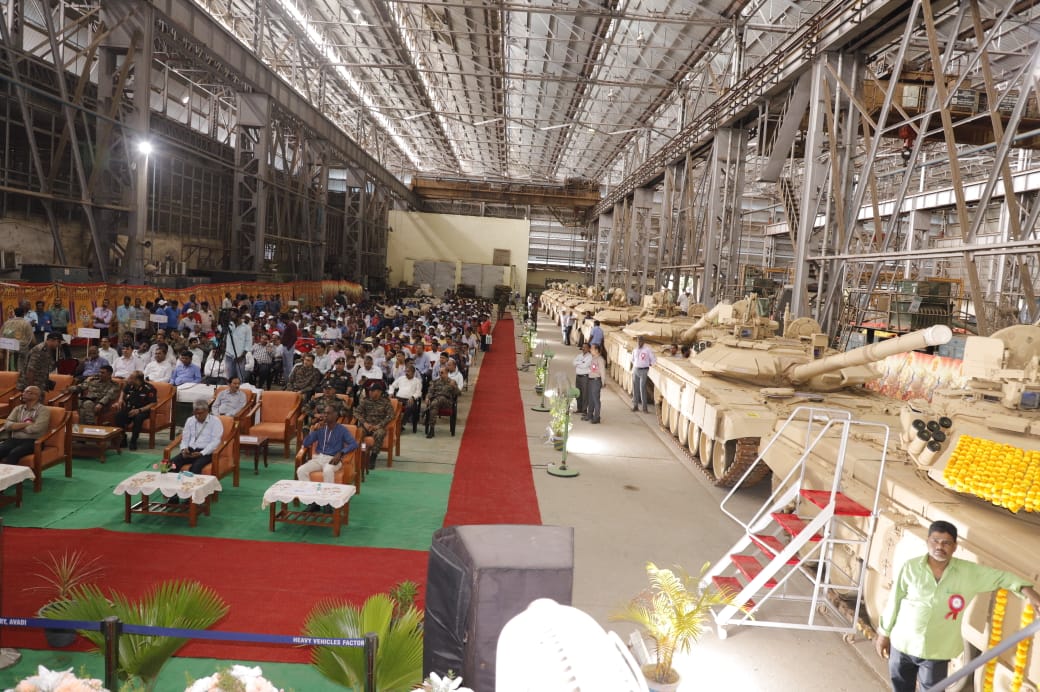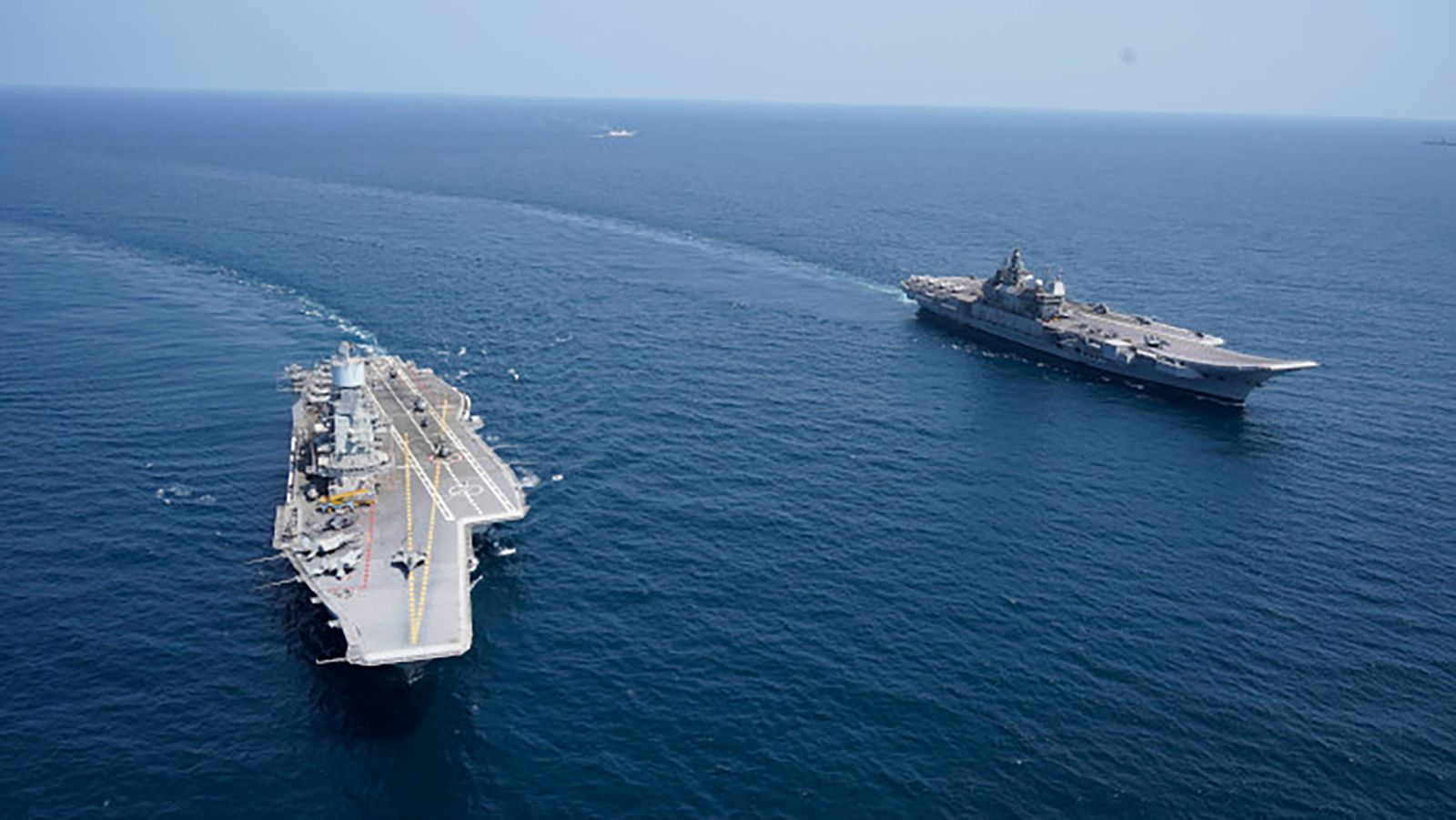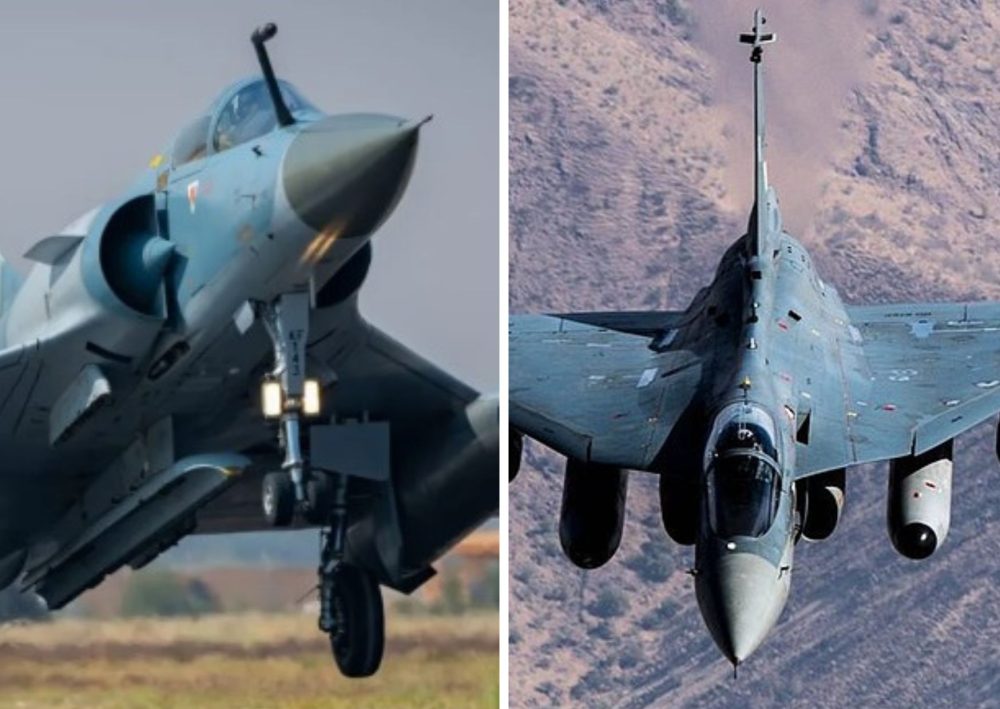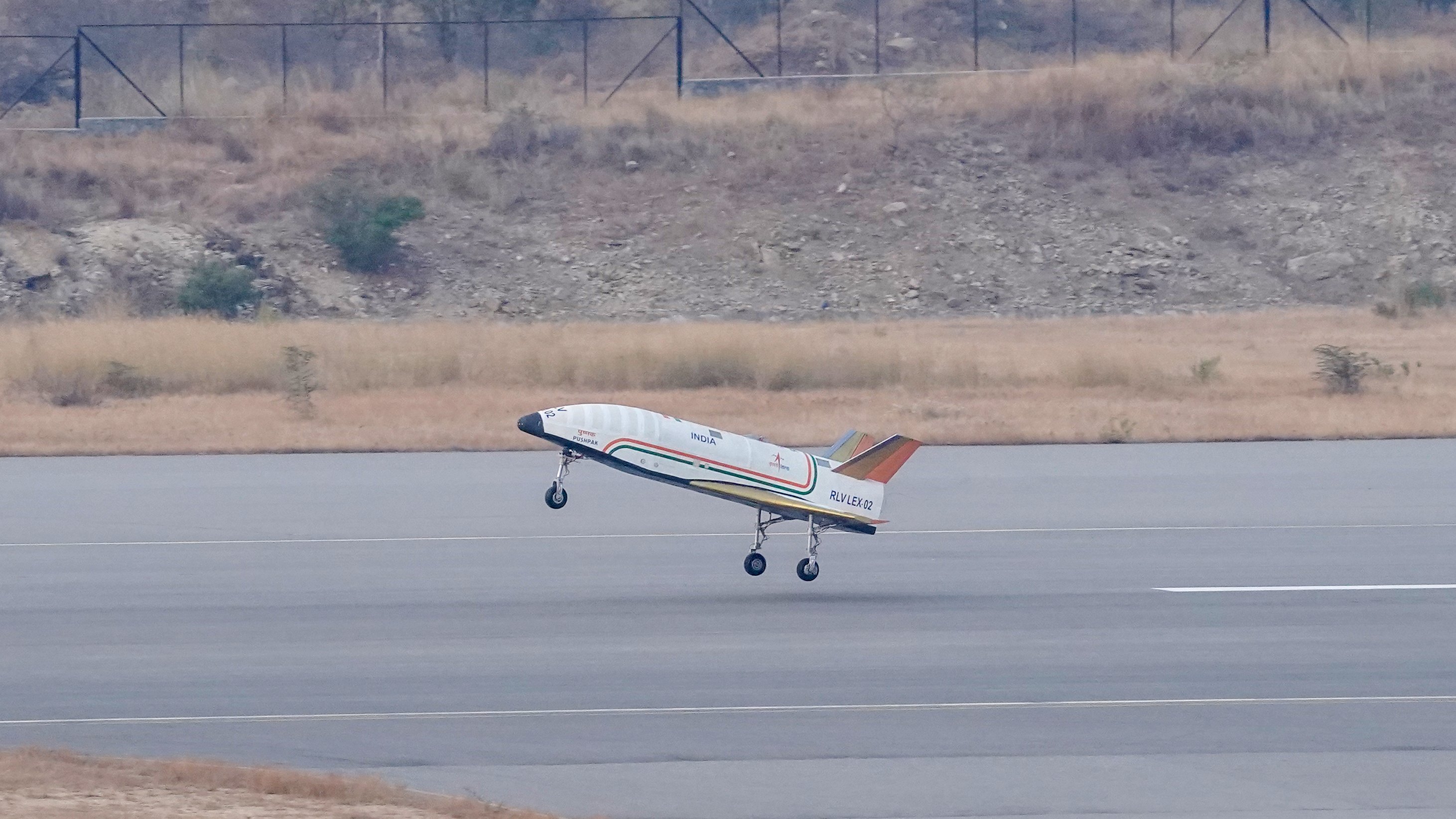Monthly Archives: June 2024
SOURCE: AFI

Satellite imagery reveals the ongoing construction of the Philippines’ first ever base for BrahMos anti-ship missiles. This development signifies a crucial step in the country’s defense modernization program, particularly in light of regional disputes with China.
The Philippines’ decision to acquire BrahMos missiles in 2022 marked a significant milestone. This $375 million deal, procured under the Philippine Navy’s Shore-Based Anti-Ship Missile Acquisition Project, aimed to address the country’s aging military equipment and enhance its ability to defend its territory.
Continue readingSOURCE: AFI

The Indian Army’s Training Command is conducting specialized maintenance training for technicians on the new AK-203 assault rifle. This program, held at the Electrical Mechanical Engineering School (EMESchool) in Vadodara, Gujarat, highlights India’s growing self-reliance in defense production.
The training equips technicians from the Army, Air Force, and Navy with the knowledge and skills necessary to maintain the AK-203 effectively. This ensures the weapon’s optimal performance and reliability in the hands of Indian forces.
Continue readingSOURCE: AFI

For decades, Bangladesh has been a significant purchaser of military equipment from China, relying heavily on Chinese-made hardware to bolster its defense capabilities. However, recent issues with the quality and reliability of these imports have prompted Dhaka to lodge complaints with Beijing. This development raises concerns about the sustainability and dependability of China as a key defense supplier.
The Bangladesh military has reported multiple instances of faulty parts and technical problems across various branches. Notably, the Bangladesh Navy has encountered significant issues with Chinese-supplied vessels. Corvettes, patrol crafts, and onshore patrol vehicles have all shown manufacturing defects and technical challenges. These problems have led to operational difficulties and increased maintenance costs.
Continue readingSOURCE: AFI

Marking the 25th anniversary of the Kargil War, General (Retd.) VP Malik, the former Chief of Army Staff who led the Indian forces during the conflict, addressed a motivational seminar organized by the National Cadet Corps (NCC).
General Malik shed light on the significant difficulties encountered during the war. He revealed that some countries attempted to exploit India’s situation by offering outdated ammunition and used equipment.
Continue readingSOURCE: RAUNAK KUNDE / NEWS BEAT / IDRW.ORG

India’s ambitious 5th generation fighter jet program, the Advanced Medium Combat Aircraft (AMCA), is exploring the potential of 3D printing to revolutionize its production process. This integration of additive manufacturing technology could lead to significant advantages in terms of cost reduction, turnaround time, and material usage.
Hindustan Aeronautics Limited (HAL), the manufacturer of the AMCA, is actively seeking partnerships with private sector companies to leverage their expertise in 3D printing. This collaboration is crucial to minimize material waste, a common challenge associated with this technology.
Continue readingSOURCE: RAUNAK KUNDE / NEWS BEAT / IDRW.ORG

The Indian Army has received its first batch of 10 T-90 Mk-III main battle tanks (MBTs), marking a significant step towards modernizing its armored capabilities. These newly produced tanks, developed by India’s Armoured Vehicles Nigam Limited (AVNL) under a licensing agreement with Russia, represent a domestic production milestone.
This delivery is part of a larger contract signed between the Indian Army and AVNL’s Heavy Vehicles Factory (HVF) in November 2019. The contract entails the procurement of a total of 464 new T-90MS tanks, with the T-90 Mk-III being the latest variant.
Continue readingSOURCE: RAUNAK KUNDE / NEWS BEAT / IDRW.ORG

India’s recent announcement to build a third aircraft carrier, with plans for “five or six more,” has reignited debate on the size and composition of its future carrier fleet. Defence Minister Rajnath Singh’s statement, while lacking specifics on timelines or design, opens doors for the Indian Navy’s long-term vision.
The Indian Navy currently operates two conventionally powered carriers, the INS Vikramaditya and the newly commissioned INS Vikrant, both displacing around 45,000 tonnes. A third carrier, similar to the Vikrant, is to be approved for construction to replace the Vikramaditya upon its retirement around 2040.
Continue readingSOURCE: AFI
)
India’s ambitious plan to see significant industrial benefits from the Rafale fighter jet deal with France appears to be faltering. While the government remains tight-lipped on the issue, experts warn of minimal progress on the ground despite demanding the highest ever offset clause, at 50% of the contract value.
Dassault Aviation, the Rafale manufacturer, has reportedly faced penalties for failing to meet offset obligations, similar to other defense contractors. These offsets, meant to boost India’s domestic defense industry, were factored into the final Rafale jet price in 2016. Further highlighting the issue, European missile supplier MBDA was fined in 2021 for delays in fulfilling its offset commitments.
Continue readingSOURCE: AFI

The Indian military is undergoing a significant air defense upgrade, with the indigenously developed Akash air defense system taking center stage. This medium-range surface-to-air missile (SAM) system is rapidly replacing the aging SA-3 Goa (SA-11 Gadfly in NATO designation) systems, offering a substantial leap in technological prowess.
One recent example of this transition is evident in Awantipora, Kashmir. A strategically crucial location, Awantipora has witnessed the deployment of an Akash battery, effectively taking over the duties of the older SA-3 system. This move signifies a crucial step towards strengthening India’s air defense posture in the region.
Continue readingSOURCE: AFI

In a significant shift from five years ago, the Indian Army has made remarkable strides in enhancing self-reliance through indigenous procurement. The financial year 2019-20 marked a pivotal moment in this journey when 57 percent of Army contracts were awarded to Indian companies, while 43 percent went to foreign vendors. However, subsequent years have witnessed a dramatic increase in the share of contracts with domestic firms, reflecting the government’s robust push for ‘Atmanirbhar Bharat’ (self-reliant India).
The transformation began gaining momentum in the financial year 2020-21, when the share of contracts with Indian firms surged to 73 percent, reducing the foreign vendors’ share to 27 percent. This trend continued into the 2021-22 financial year, maintaining the same distribution, thereby showcasing a sustained commitment to prioritizing domestic defense manufacturing.
Continue readingSOURCE: AFI

Pakistan’s efforts to conceal a recent fighter jet crash were thwarted by the manufacturer of the pilot’s ejection seat. A JF-17 Block 2 aircraft went down near Jhang district on June 5th, but the incident remained unreported in Pakistani media.
The truth came to light on June 11th with a social media post by Martin-Baker, the company behind the PK16LE ejection seat used in the JF-17. Their post confirmed the crash and successful pilot ejection, exposing Pakistan’s attempt to keep the incident quiet.
Continue readingSOURCE: IDRW.ORG

In a significant development for India-U.S. defense collaboration, National Security Advisor Ajit Doval and U.S. National Security Advisor Jake Sullivan are likely to meet soon and resume discussions on the co-development of the Stryker Armoured vehicle. This move follows the commencement of Prime Minister Narendra Modi’s third term in office, marking a renewed emphasis on enhancing India’s military capabilities through international partnerships.
The co-development initiative of the Stryker armoured vehicle underscores a joint production effort, with plans to manufacture the vehicles in India. The Indian Army is set to procure 300 units, which will likely be assembled by public sector companies. However, the final decision regarding the manufacturing entities and the exact order quantity rests with the Ministry of Defence (MoD).
Continue readingSOURCE: IDRW.ORG.

The Defence Research and Development Organisation (DRDO) is taking a significant step forward in India’s indigenous missile development program by procuring propellant castings for Project KUSHA, also known as the Precision Guided Long Range Surface to Air Missile (PGLRSAM).
These propellant castings are specifically designed for the PGLRSAM missile’s dual-pulse rocket motor, designated P-1 and P-2. The dual-pulse motor provides efficient propulsion for the missile, enabling it to effectively engage aerial targets at long ranges.
Continue readingSOURCE: AFI

The Indian Air Force (IAF) faces a dilemma: opting for used Dassault Mirage 2000-5 fighter jets from Qatar at a seemingly attractive price of $66.25 million each, or acquiring brand new, indigenous Tejas Mk1A light combat aircraft at $43 million apiece. While the sticker price of the Mirages seems lower, a closer look reveals a different story.
The Mirage 2000-5 fighter jets, offered by Qatar, are priced significantly higher than the Tejas Mk1A jets. At $66.25 million per unit, the Mirage 2000-5 jets come with a hefty price tag, especially considering that they are used aircraft. The Tejas Mk1A jets, on the other hand, are available at $43 million per unit, offering a more economical option for the IAF.
Continue readingSOURCE: AFI

The Indian Space Research Organisation (ISRO) is facing a hurdle in its pursuit of reusable launch vehicle (RLV) technology. While weather conditions permitting, they aim to conduct a crucial experiment this month in Challakere, Karnataka. However, technical issues with a Chinook helicopter are causing delays for a separate integrated air-drop test (IADT) of simulated Gaganyaan crew modules at Sriharikota.
This upcoming experiment focuses on the RLV-LEX series, specifically the third iteration – RLV-LEX-03. Following the successful completion of the RLV-LEX-02 landing experiment on March 22nd, 2024, RLV-LEX-03 aims to push the boundaries further, refining the vehicle’s performance, guidance systems, and landing capabilities.
Continue reading